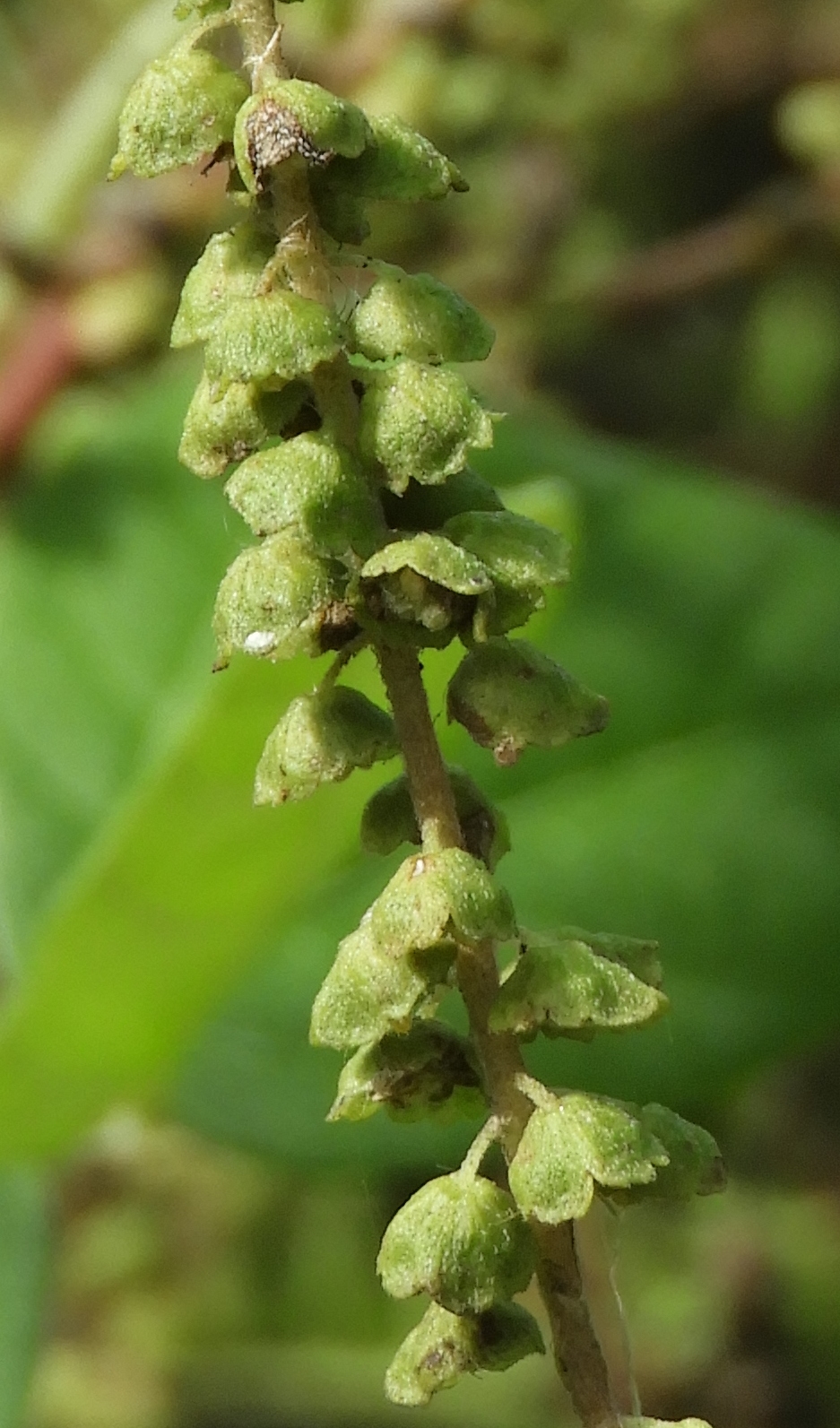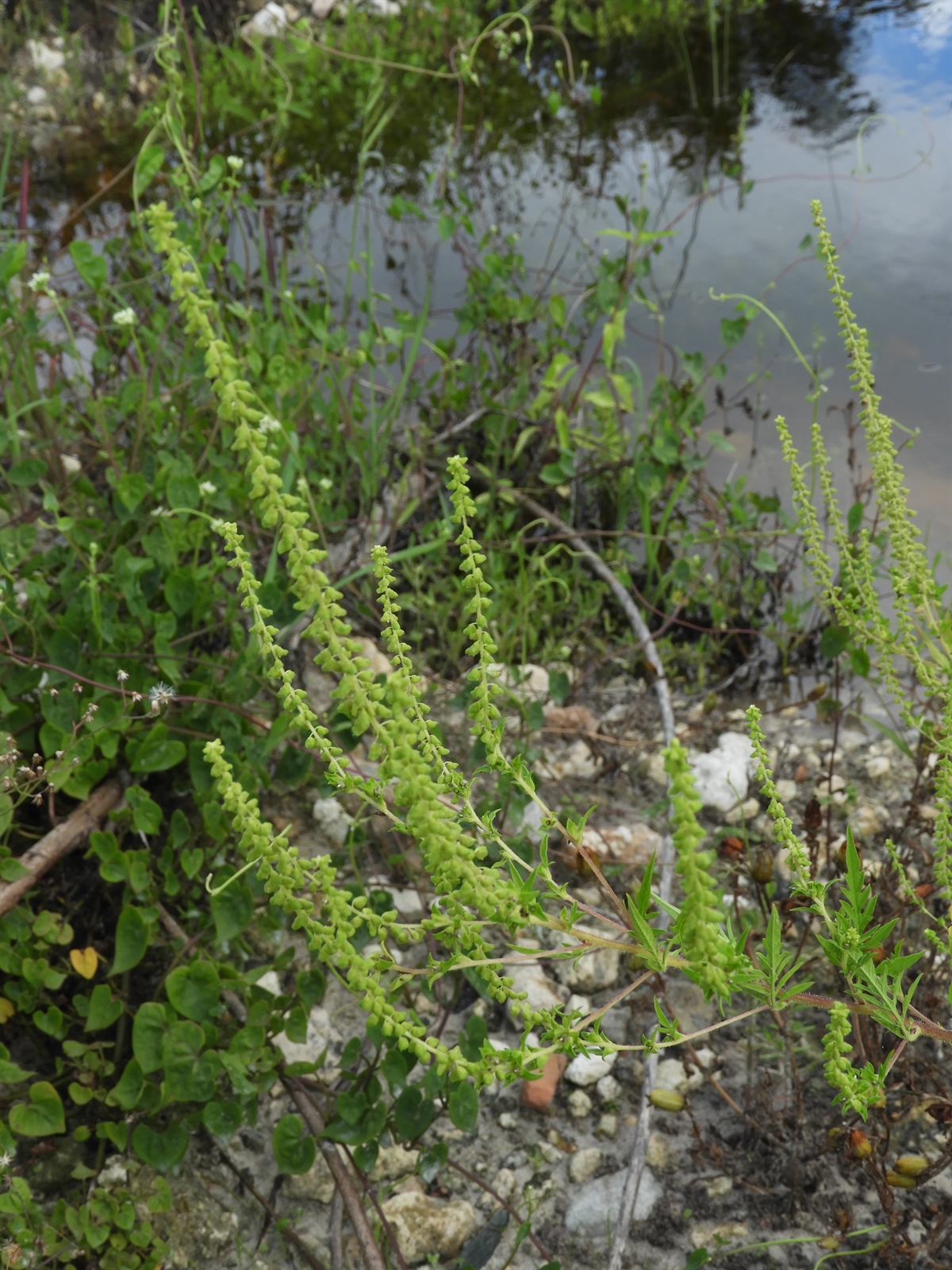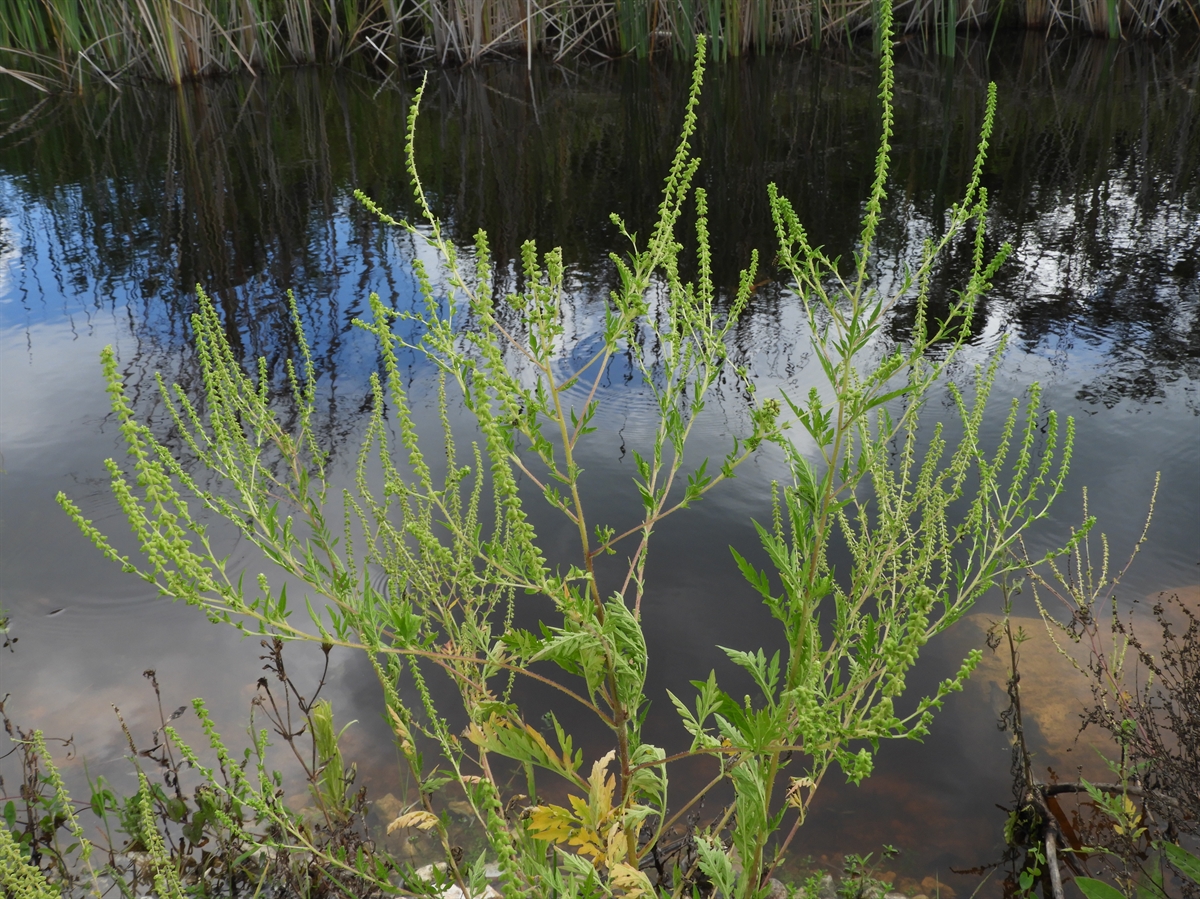Habit: Ambrosia artemisiifolia is an annual to 1.5 m in height. The leaves are arranged alternately, to 14 cm in length, ovate, deeply lobed to pinnatifid. The lobes/leaflets have a crenate leaf margin. All vegetation is pubescent.
Ambrosia artemisiifolia is monoecious. The incomplete, imperfect, actinomorphic flowers are arranged in racemes of heads subtended an involucre made of 1 series of phyllaries. The flowers each subtended by a bract. The staminate flowers have 5 sepals, 5 unfused stamens, and a non-functional ovary. The carpellate flowers have no perianth or stamens and a single superior ovary that becomes an achene at maturity. The achenes are covered with pubescence and tubercles.
Habitat: Ambrosia artemisiifolia grows in Human Altered environments (waste areas, roadsides, gardens, abandoned fields).
Distribution: Ambrosia artemisiifolia occurs on the northern island groups within the Lucayan Archipelago as well as the United States and Canada. It has spread to South America, northern Africa, Europe, the Middle East and the Indian subcontinent.
Medicinal/Cultural/Economic usage: Ambrosia artemisiifolia is not known to be used medicinally in the Lucayan Archipelago.



